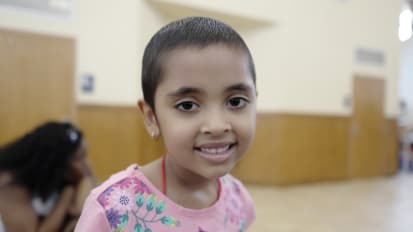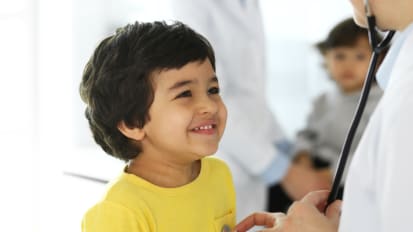Search Videos and More
 Document
Document
Headaches in Children and Teenagers
Pediatric Headache Program: Headaches in Children and Teenagers. Symptoms, When To Refer To a Neurologist, and Preventive Treatment. Video
Video
Strategies for Chronic Pain in Kids: Using Ketamine to Advantage
Pediatric anesthesiologist Stephen Long, MD, discusses treating pain from long-term conditions, such as sickle cell disease. News
News
Pediatric Surgical Services Newsletter - September 2021
In this issue: Spine Surgery Multidisciplinary Team minimizes complications, Hybrid Angiography OR Suite Supports AVM procedures, new Brain Recovery Education Clinic launched. Video
Video
Optimizing the Health of Childhood Cancer Survivors: A Guide for Primary Care
Hematologist-oncologist Robert Raphael, MD, director of the Pediatric Survivorship Program, lays out keys to protecting these patients’ physical as well as mental health. Video
Video
Shining a Light on Pediatric Pulmonary Hypertension: New Hope for Better Lives
Pediatric critical care specialist Jeffrey R. Fineman, MD, breaks down a complex condition with wide-ranging symptoms in babies and children. Video
Video
Better Asthma Management: An Expert on Risk-Reducing Strategies
Pediatric pulmonologist Ngoc Ly, MD, MPH, unpacks the latest evidence on asthma medications and regimens for controlling symptoms and reducing emergency visits. Document
Document
Early Phase Pediatric Cancer Clinical Trials
The Precision Cancer Medicine Program at UCSF Benioff Children’s Hospitals provides unparalleled expertise as one of the nation’s pre-eminent programs for advanced, molecularly focused pediatric cancer diagnosis and care. Video
Video
Adolescent Isolation, Anxiety and Anger: How to Manage COVID’s Heightening Effects
Child and adolescent psychiatrist Petra Steinbuchel, MD, discusses the ongoing behavioral fallout from the pandemic, presenting the evidence on increases in mental health problems among adolescents. With practical guidance, she focuses on how to support stressed kids by fostering connections, nurturing resilience and building life skills. Video
Video
How to Handle Hernias: A Pediatric Expert’s Guide to Emergencies Versus Wait-and-See’s
Here’s help with distinguishing hernias from hydroceles and knowing when delaying the repair is wise. Pediatric surgeon Aaron R. Jensen, MD, FACS, FAAP, offers a straightforward diagnostic method, surprising tips on imaging, and the evidence on anesthesia’s risks and long-term repercussions for the very young. News
News
Pediatric Surgical Services Newsletter - August 2021
In this issue: Surgical Services at Fremont Specialty Clinic, Awake Botox Treatment for Pediatric Neurogenic Bladder, Fetal Evaluation and Treatment for High-Risk Pregnancies. Video
Video
Aortic Abnormalities: How to Identify Pediatric Patients at Risk
Pediatric cardiologist Emilio Quezada, MD, discusses signs that a young patient should be evaluated for genetic syndromes associated with thoracic aorta dilation and aneurysm. Video
Video
Navigate the Labyrinth of Eating Disorders: An Expert on Detection and Therapy
Drawing on extensive experience, Sasha Gorrell, PhD, part of the UCSF Eating Disorders Program, describes how to recognize and distinguish types of eating disorders, shedding light on common comorbidities and pointing out diagnostic pitfalls.


